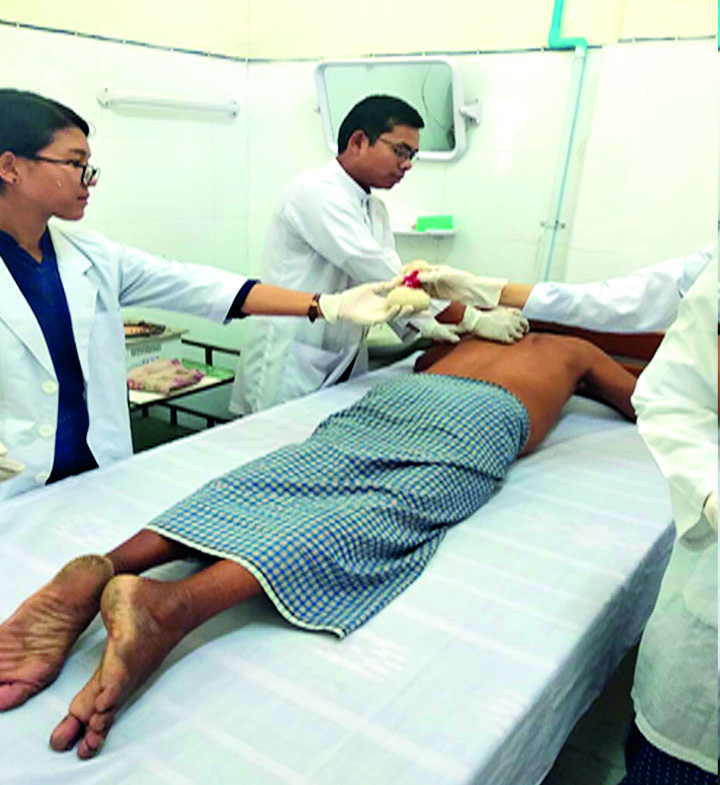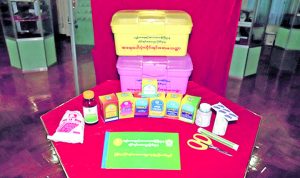By Dr.Moe Swe, Dr.Than LwinTun, Ministry of Health and Sports
The Union Government has been seriously encouraging Traditional Medicine (TM), considering it a traditional heritage and a profession which can provide full health care to the people together with modern western medical science to ensure sustainable development and systematic progress, and in the right way. Besides, The Union Government, on its parts, has been working to raise the standard of Myanmar traditional medicine and provide better health care to people through use of traditional medicine practices. (Excerpt of Message from the President, H.E U Win Myint to 19th Myanmar Traditional Medicine Practitioners’ Conference, on 28 Dec 2018)
We will also give strong support and upgrade our traditional medicine field. Here the role of research is very important if we really want to promote safe use of traditional medicines by the population. (Ref; Inaugural speech delivered by the Union Minister for Health and Sports, H.E Dr Myint Htwe to professionals and staff members of MOHS on 1st April 2016)
Traditional Medicine (TM) and Herbal Medicine (HM) are widely used in countries of South East Asia Region (SEA). Herbal medicine forms a substantial part of TM. According to definition of World Health Organization, HM includes herbs, herbal materials, herbal preparation and finished herbal products that contains as active ingredients, parts of plants, other plant materials. There is increasing demands for medical plants both in the developing and developed countries.[1]

Primary Health care is defined as an essential care based on practical, scientifically sound and socially acceptable methods and technology made universally accessible to individuals and families in the community through their full participation and at a cost that community and country can afford to maintain at every stage of their development in the spirit of self-reliance and self-determination. [2] The identification of locally available and commonly used medicinal plants and herbs would have to be effected and a list compiled. The use of medicinal plants and traditional medicine could make people become more self-reliance. Across the world, TM is either the mainstay of health care delivery or serves as a complement to it. In some countries, TM or non-conventional medicine may be termed complementary medicine (CM). TM &CM is an important and often underestimated part of health care. TM&CM is found in almost every country in the world and demand for its services is increasing. TM of proven quality, safety and efficacy contributes to the goal of ensuring that all people have access to care. Many countries now recognize the need to develop a cohesive and integrative approach to health care that allows governments, health care practitioners and most importantly, those who use health care services, to access TM&CM in a safe, respectful, cost-efficient and effective manner. [3]
Every country in the world possesses their own conventional medical practices depending on their topography and culture. Similarly, the practice of traditional medicine in Myanmar dates back thousands of years, and still stands as an ancestral medical practice. Myanmar traditional medical practice means any form of medical treatment that belongs to any one of the four methods; Desana Method, Bhesijja method, Nakhatta Method and Vijjadhara Method. Desana Method is a form of medical practice to examine and remedy the negative effect anatomy and physiology have on health on account of action, mind, weather and food in such a way as is mentioned in the great discourse the Lord Buddha preached. Bhesijja Method is a form of medical practice based on Ayurveda medical practice to examine and remedy the malfunction in the body which is composed of three dosas, seven elements and twelve malas resulting from time, one’s self and one’s past deeds. Nakkhatta Method is based on calculations of zodiac of stars, planets and time of birth and age.These calculations are linked to prescribe dietary practices. Vijjadhara Method is a form of medical practice that is concerned with the making of nine properties each of analogy and physiology as a medicament by means of special techniques and with the use of the partitas preached by the Lord Buddha as well. [4]
Primary Health care includes health promotion, illness prevention, health maintenance & home support, community rehabilitation, pre-hospital emergency medical services, co-ordination and referral to other areas of health care.
The Department of Traditional Medicine, under Myanmar Ministry of Health and Sports, is taking harmonious measures for such tasks as health care, herbal plantation, production of traditional medicine and research so that both rural and urban people will be able to receive medical care with traditional medicine.
References;
1. The Use of Herbal Medicine in Primary Health Care, Report of the Regional Meeting, Myanmar 10-12 March 2009)
2. World Health Organization (WHO). Alma-Ata Declaration,1978
3. Foreword of Former WHO Director General, Dr. Margaret Chan, WHO Traditional Medicine Strategy 2014-2023
4. A Manual of Myanmar Traditional Medicine for Primary Health Workers, July 2008)


